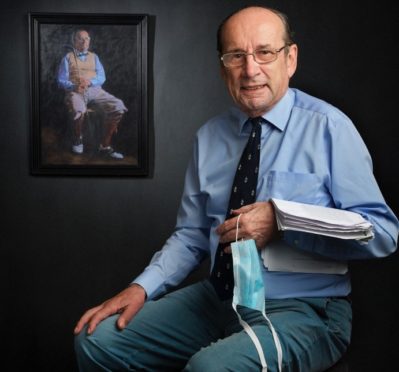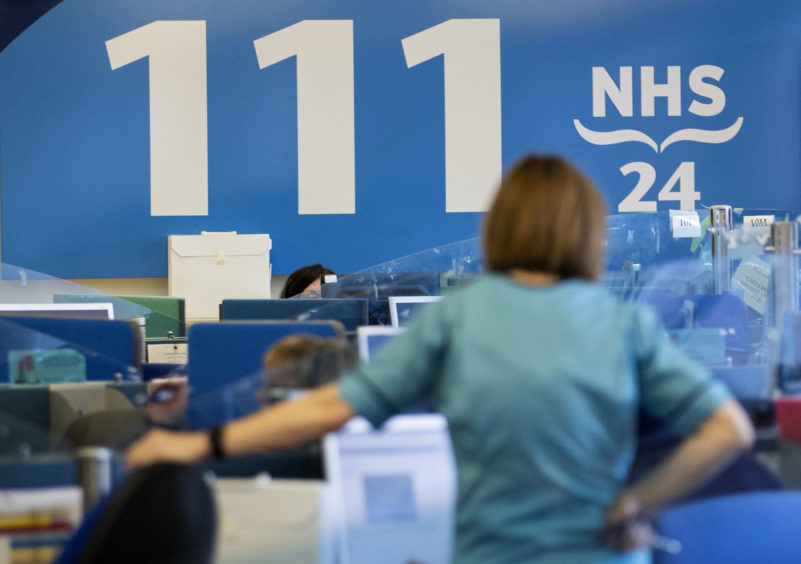
For many, images of the early years of the NHS are probably of “Doctor” films and various Carry On movies.
You know, James Robertson Justice, Hattie Jacques and Jim Dale representing various facets of the health service.
But Dr David Hamilton knows the true picture, and is the perfect man to tell us just how much our beloved NHS changed during his more than 45 years as a kidney transplant surgeon.
For example, Mrs S remembers her early days as a pharmacist when you could find cabinets on the wards in which cans of Guinness and bottles of brandy were kept for medicinal purposes, basically giving “little old ladies a wee restorative of an evening”.
“I don’t remember that, and it does surprise me as it was fairly puritanical, except at Christmas when there was the traditional party,” recalls Dr Hamilton, who began his career in Glasgow in the early 1960s.
“I suppose it makes sense, medicinal spirits being there in the early days as a stimulant tonic. Guinness I can see as a nutritional supplement, mind you, full of goodness, but I can’t say we were dishing it out on the surgical wards, maybe more on the medical wards!
“In the old days, there were ‘tonics’ the GP would prescribe, and some of them probably had a good whack of alcohol in them though they were mostly iron to build up against anaemia, but in general those tonics have been discredited now.”
Another big difference was the former emphasis on bed rest. Nowadays they can’t wait to get you out of the door, partly because there just aren’t the hospital beds to have people putting their feet up for a fortnight.
“They knew about thrombosis, but after having a baby they put the women to bed for two weeks,” nods Dr H.
“They knew about swollen legs and clots going to the lungs, which is what we try to avoid now by getting the ladies mobile, but the argument then was if you didn’t move your legs, maybe the clot wouldn’t move.
“They get you out as quickly as possible now, but people used to hang about for a couple of days before surgery, and then afterwards, too, even for something simple like a hernia.”
Dr Hamilton also remembers staff smoking in hospital, while nowadays even the sorry sight of those poor wretches having a quick fag outside the hospital doors is a thing of the past.
“Yes, I remember our anaesthetist smoking in the anaesthetic room. He would have a cigarette on the go all the time and he’d prop it up vertically on the light switch box while he was working, and it could burn down on to the plastic,” he says.
“I used to show visitors round and point to the burn marks where the cigarette had burned down while he was working.
“And this was in a room full of oxygen where flames are thought to be a bad thing, but these guys just ignored the risk and there were no incidents.
“There were ashtrays by the bedsides and there’s a lovely picture of Nye Bevan, the Minister of Health who established the NHS, making a ministerial visit to a hospital and he’s sitting by a bedside smoking away!”
Apparently many patients bemoan the move away from Nightingale wards to more private rooms, and David says: “Yes, especially in our little renal world.
“The renal units have the artificial kidney machines and when you have private rooms, which are very nice in theory, and you’re dialysing somebody a nurse has to be watching the machine.
“You can watch all the machines in a six-bed unit, watching for any leaks and all that, but when you have these single rooms it means one nurse per room watching the machines.
“In the old days, you had 20 people easily seen from the fireplace, or the neighbouring bed would shout if somebody collapsed and the nurse would be there quickly.
“The solitude is not a good thing, either. People enjoy a wee bit of chat, and having had an operation a wee bit later in life myself, it’s a long day in a single room.
“The concept of a ward sister has gone, too. We had pretty fierce ward sisters in those days that led the ward round, and the other thing that’s gone is the indispensable secretary because everything was typed with carbon copies.
“You had this secretary who was doing all this and all the phone calls – on a landline of course – so communication’s been revolutionised with firstly word processors and now the internet.”
Looking at Dr H’s area of expertise, how has that evolved over his time? Also, why was it that people were originally against transplants?
“There was a lot of resistance. Even eminent surgeons were dead against transplants because they were seen as not natural, against nature,” he recalls.
“The barrier was so high, and many felt it was so fundamental in nature to get rid of foreign tissue that there would be no way round it.
“It was also expensive and the money could be better spent on other things, and the results were awful at the beginning.
“The actual procedure hasn’t changed much, the operation is pretty standard and what kicked it off was when the first twins were done in Boston.
“That set the pattern which hasn’t changed very much.
“I didn’t count how many transplants I did, but it was hundreds.”
So is it fair to say the NHS is unrecognisable from when the good doctor first started?
“The basic service is still there, free at the point of consumption, but in some ways in the early days it was really run for the doctors, whereas now it’s run for the patients – it has flipped nicely,” says Dr H.
“In the early days, for the surgical clinics, all the patients had to come at nine o’clock on the dot, no appointments, and it was run for the doctors’ convenience so they weren’t kept waiting for appointments.
“Now it’s the other way around and we have appointments for the patients, and giving them more power is a good thing and the best change there has been in the NHS.
“The service is better – waiting lists used to be just in the hands of the staff, now they’ve got to get things moving – and we have the audit system in which everybody has to sit down every week and go over the cases to see if there are any lessons to be learned, which has brought standards.
“Also, litigation has played a part in that. There was no litigation in those days, taking action against a doctor or surgeon or hospital was unthinkable.
“People tended to treat them like gods and there was an old-fashioned attitude that you were lucky to get the service anyway, so don’t complain!”
While he feels the NHS has undeniably changed for the better, Dr H rues one loss.
“There was the unit system,” he explains. “You had the consultant and then junior doctors, and the ward sister and secretary, and that was unchanging.
“When we went into Europe and had to conform to the directive on time, that was destroyed so people work shifts now and there’s no loyalty to a team because the personnel’s changing all the time.
“You get obstetricians delivering a difficult baby. They’re with the mother for six or seven hours, they know exactly what’s going on, but then they have to go off because of the shift system and somebody comes on who doesn’t know what’s going on.
“It was the same in surgery, in the old days you saw things through.”
Waiting For The Urine: Reminiscences Of A Scottish Transplant Surgeon, by Dr David Hamilton, published by the Patrick Press, is available now.

Enjoy the convenience of having The Sunday Post delivered as a digital ePaper straight to your smartphone, tablet or computer.
Subscribe for only £5.49 a month and enjoy all the benefits of the printed paper as a digital replica.
Subscribe © Jane Barlow/PA Wire
© Jane Barlow/PA Wire